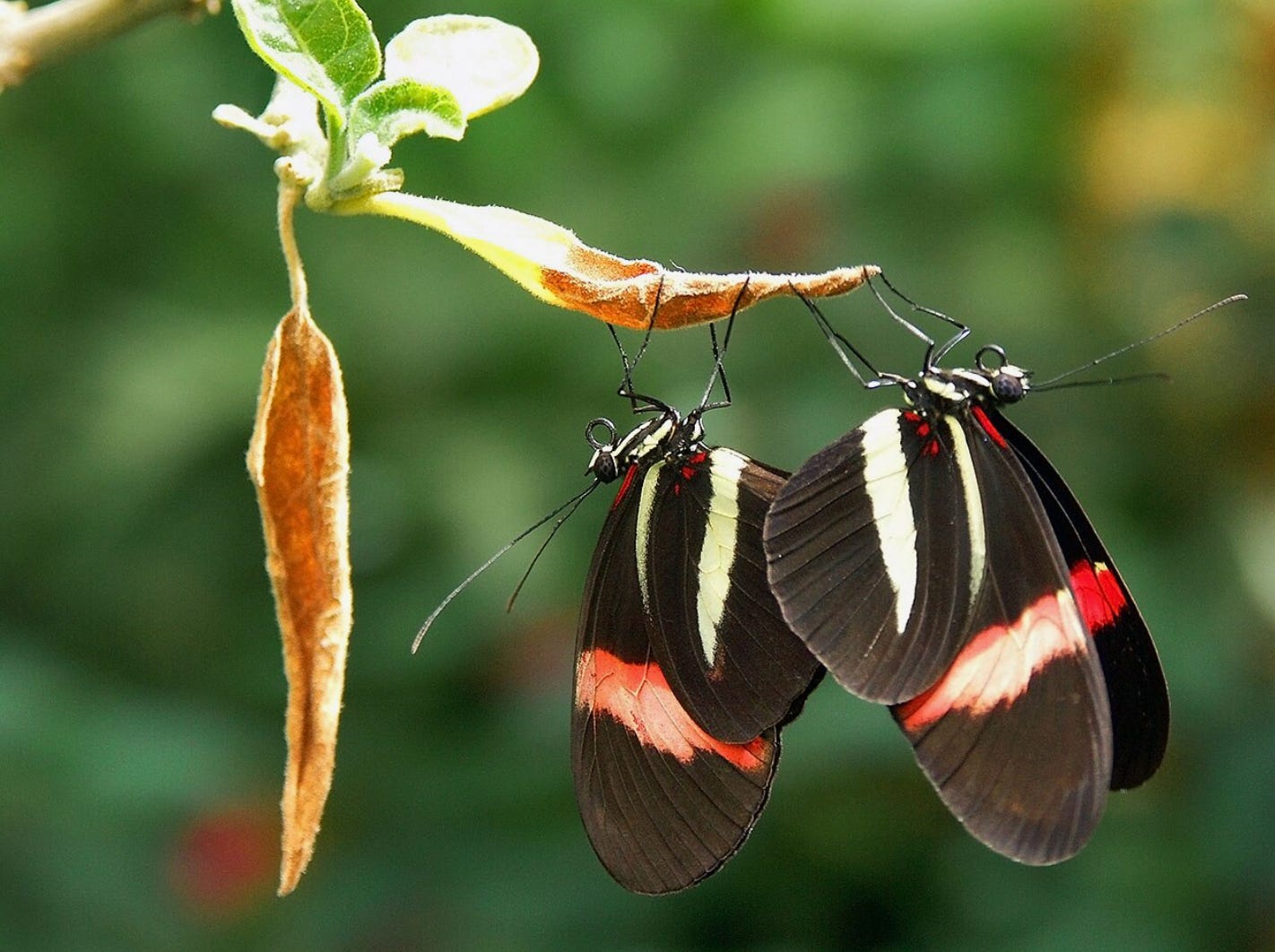AI Technology Inspired by Mating Butterflies
Oh, nothing. Just a team of AI scientists spying on butterflies
Our world has been extremely imperfect until butterfly-inspired AI technology came along. Lucky us though, the wait is finally over, we can relax now.
Yay.
Seriously though, check this out, this is the most poetic AI-related reporting I have seen in a long time. The point of the story is that as of this second, AI mostly relies on only one “sense” (visual signal, audio signal, etc.), and now the researchers are working on multisensory AI, using the inspiration of mating butterflies.
I would file all this under “the devil is really in the detail, it depends on how and for what purpose the sensors will be used.” But the reporting is still absurdly poetic. It is so poetic that it sounds like dystopian poetry that AI would write about itself if the fast calculator AI were pretending to sound human and admire butterflies. Or perhaps, it rather sounds like a young human being who, due to no fault of his or her own, has been tragically subjected to arrested development and given the poisonous urge to jump up and down and weave poetic-sounding words trying desperately to please the Machine.
Here it is. The first paragraph is almost an erotic poem, albeit of an arrested development kind.
When it comes to mating, two things matter for Heliconius butterflies: the look and the smell of their potential partner. The black and orange butterflies have incredibly small brains, yet they must process both sensory inputs at the same time - which is more than current artificial intelligence (AI) technologies can achieve without significant energy consumption. To make AI as smart as the butterflies, a team of Penn State researchers have created a multi-sensory AI platform that is both more advanced and uses less energy than other AI technologies.
"If you think about the AI we have today, we have very good image processors based on visual or excellent language processors that use audio," said Saptarshi Das, associate professor of engineering science and mechanics and corresponding author of the study published today (March 28) in Advanced Materials. "But when you think about most animals and also human beings, decision-making is based on more than one sense. While AI performs quite well with a single sensory input, multi-sensory decision making is not happening with the current AI."
"Butterflies and many other animal brains are very tiny, and they use low amounts of resources, both in terms of energy used and physical size of the brain," Das said. "And yet they perform computational tasks that rely on multiple sensory inputs at once."
The researchers developed a hardware platform made of two 2D materials, molybdenum sulfide (MoS2) and graphene.. The researchers chose MoS2 for its light-sensing capabilities, which mimic the visual capabilities of the butterfly. The graphene portion of the device… can detect chemical molecules and mimic the pheromone detection of the butterfly's brain.
The researchers tested their device by exposing their dual-material sensor to different colored lights, mimicking the visual cues, and applying solutions with varying chemical compositions resembling the pheromones released by butterflies. The goal was to see how well their sensor could integrate information from both the photo detector and chemisensor, similar to how a butterfly's mating success relies on matching wing color and pheromone strength.
By measuring the output response, the researchers determined that their devices could seamlessly integrate visual and chemical cues. This highlights the potential for their sensor to process and interpret diverse types of information simultaneously, they said.
Seriously though, what makes the scientists so damn confident that they know how exactly the butterflies choose their mating partners? What if the butterflies fall in love just like people do?
A note to readers: If you are in the position to do so, I very much encourage you to become a paid subscriber or donate. I love you in any case, but it helps A LOT, and I am in a dire need to get more donations and paid subscribers while keeping my posts free. Thank you from my heart for your support!




Oh these adorable scientists studying cute little butterflies. What could be more wholesome? More warm blooded and human?
Except that the application for smell sensing is on deck for a next level generation of killer robots. Swarms of killer drones will be able to act without central control by using pheromone signalling, just as ants do.
Do these scientists know they're building killer robots? Rhetorical question - I suspect they don't. I'm sure they wear cling to their blinders like a child to a security blankie.
Computer scientists have always had this mistaken notion that living creatures are just complicated digital computers. This looks like just another instance of that hubris.